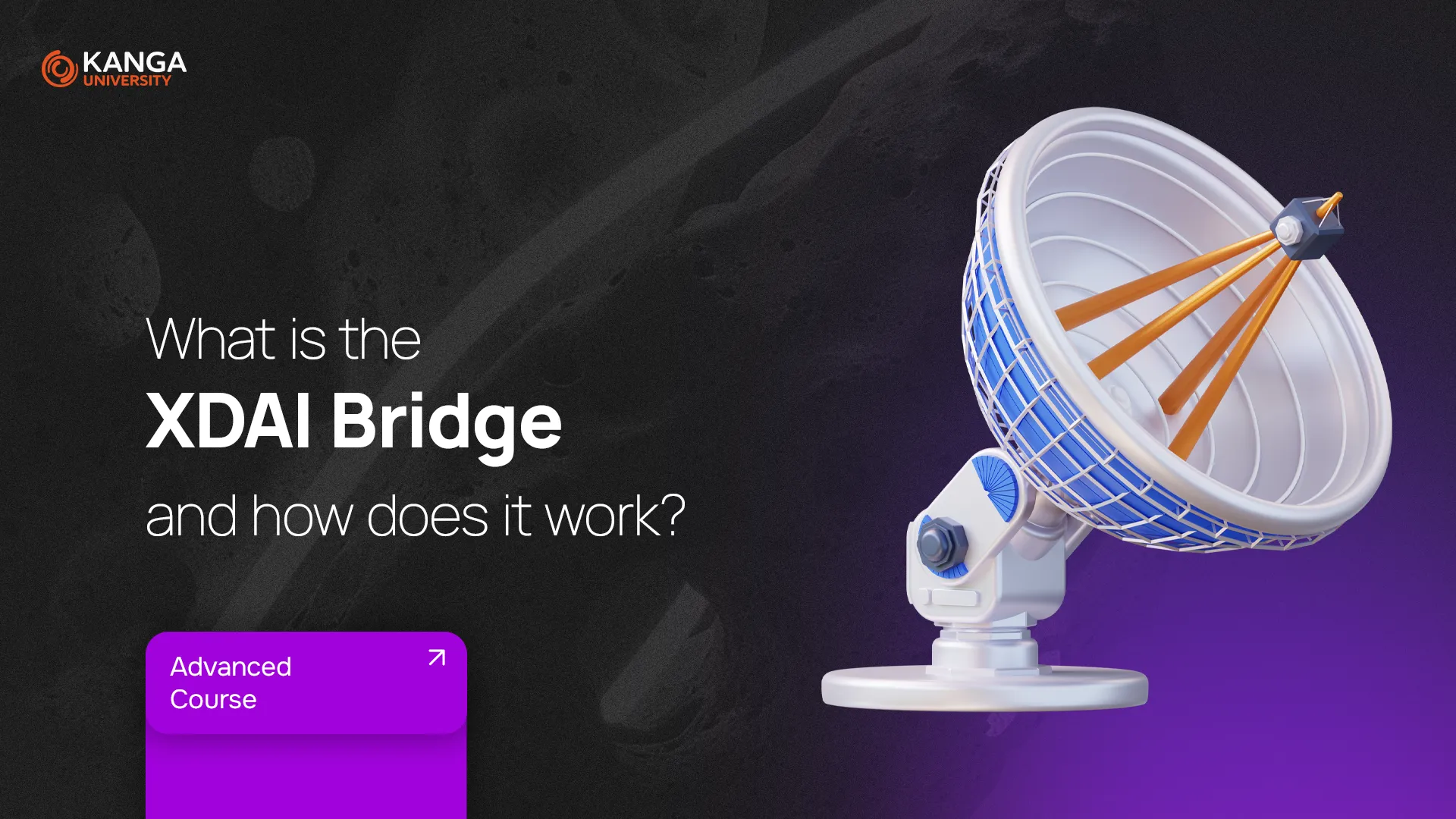
Ethereum is a powerful blockchain, but it’s no secret that it struggles with high gas fees and slow transactions. That’s where Gnosis Chain and XDAI come in — offering a faster, more cost-efficient experience without sacrificing compatibility with Ethereum.
In this lesson, we’ll explore what Gnosis Chain is, how the XDAI Bridge works, and why this ecosystem matters for the future of Web3.
From Prediction Markets to Infrastructure
Gnosis started in 2015 as a decentralized prediction market, but the team soon recognized a bigger opportunity: helping the entire Ethereum ecosystem scale more effectively.
The result? Gnosis DAO pivoted toward building core infrastructure — and one of its biggest achievements is Gnosis Chain, a sidechain that’s fully Ethereum-compatible.
What Is Gnosis Chain?
Gnosis Chain is a sidechain that runs alongside Ethereum. It’s fully compatible with the Ethereum Virtual Machine (EVM), which means any app built for Ethereum can run on Gnosis Chain with little to no changes.
It uses a dual-token model:
-
XDAI – a stablecoin used for gas fees (backed 1:1 with DAI)
-
STAKE – a token used for securing the network via Delegated Proof of Stake (DPoS)
This setup creates a network that’s fast, cheap, and predictable — perfect for decentralized applications (dApps) that want to avoid Ethereum’s congestion.
So Where Does the XDAI Bridge Fit In?
Great question. The XDAI Bridge is the tool that connects Ethereum with Gnosis Chain.
Here’s what it does:
-
Converts DAI (on Ethereum) into XDAI (on Gnosis)
-
Enables users to send and receive tokens between chains
-
Powers the minting and burning of XDAI
Without this bridge, Gnosis Chain wouldn’t be able to function as a scalable solution for Ethereum. It’s that important.
How Does the XDAI Bridge Work?
Let’s walk through the process:
-
Get some DAI – either by minting it through MakerDAO or buying it on an exchange.
-
Send your DAI to the XDAI Bridge – a smart contract that locks your tokens.
-
The bridge notifies a smart contract on Gnosis Chain, triggering the minting of an equal amount of XDAI to your wallet address.
-
You now have XDAI ready to use — for payments, transactions, or interacting with dApps.
-
Want to return to Ethereum? Just reverse the process: XDAI gets burned, and you get your DAI back.
Revenue and Ecosystem Utility
Here’s something even cooler: the DAI locked in the bridge isn’t just sitting there. GnosisDAO deposits part of it into lending protocols like Compound and Aave, generating yield.
-
Roughly $1M in DAI is held in reserve.
-
The rest earns interest, and the profits go to GnosisDAO’s treasury.
-
That treasury funds development of the ecosystem — including bridges, tools, and community grants.
The XDAI Bridge doesn’t just move money — it helps grow the entire network.
What Makes XDAI So Useful?
XDAI is fast, stable, and incredibly cheap to use. Thanks to ERC-20 to native token conversion built into the bridge, it supports:
-
Reliable payments
-
Low fees
-
Lightning-fast confirmation times
Whether you’re minting NFTs, sending crypto, or interacting with smart contracts — XDAI makes it smoother.
Types of Bridges on Gnosis Chain
Gnosis Chain supports several types of bridges:
-
Native bridges – built directly into the Gnosis ecosystem (e.g. XDAI Bridge, OmniBridge).
-
Third-party bridges – created by external teams to support token movement.
-
App-specific bridges – customized for particular dApps to manage their own token logic.
This diversity makes the network highly flexible and integrated with the broader DeFi world.
Summary
Together, XDAI and Gnosis Chain create a powerful alternative for developers and users who want:
-
The security and infrastructure of Ethereum,
-
But with faster speed and much lower costs.
With XDAI Bridge acting as the backbone, users can seamlessly move assets between Ethereum and Gnosis — and developers can build efficient apps without worrying about gas fees.
It’s a win-win for everyone in the ecosystem.